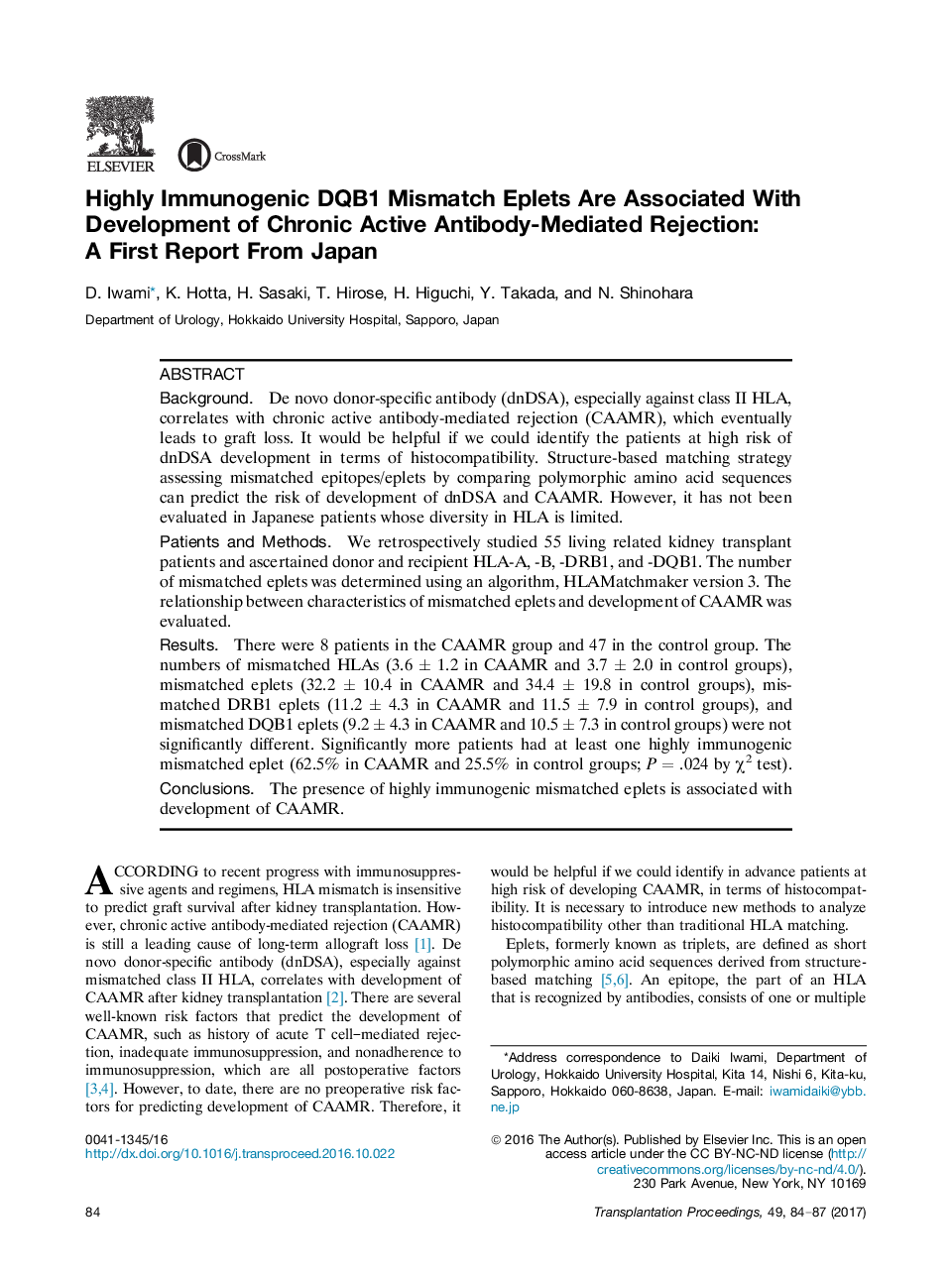| Article ID | Journal | Published Year | Pages | File Type |
|---|---|---|---|---|
| 5729294 | Transplantation Proceedings | 2017 | 4 Pages |
BackgroundDe novo donor-specific antibody (dnDSA), especially against class II HLA, correlates with chronic active antibody-mediated rejection (CAAMR), which eventually leads to graft loss. It would be helpful if we could identify the patients at high risk of dnDSA development in terms of histocompatibility. Structure-based matching strategy assessing mismatched epitopes/eplets by comparing polymorphic amino acid sequences can predict the risk of development of dnDSA and CAAMR. However, it has not been evaluated in Japanese patients whose diversity in HLA is limited.Patients and MethodsWe retrospectively studied 55 living related kidney transplant patients and ascertained donor and recipient HLA-A, -B, -DRB1, and -DQB1. The number of mismatched eplets was determined using an algorithm, HLAMatchmaker version 3. The relationship between characteristics of mismatched eplets and development of CAAMR was evaluated.ResultsThere were 8 patients in the CAAMR group and 47 in the control group. The numbers of mismatched HLAs (3.6 ± 1.2 in CAAMR and 3.7 ± 2.0 in control groups), mismatched eplets (32.2 ± 10.4 in CAAMR and 34.4 ± 19.8 in control groups), mismatched DRB1 eplets (11.2 ± 4.3 in CAAMR and 11.5 ± 7.9 in control groups), and mismatched DQB1 eplets (9.2 ± 4.3 in CAAMR and 10.5 ± 7.3 in control groups) were not significantly different. Significantly more patients had at least one highly immunogenic mismatched eplet (62.5% in CAAMR and 25.5% in control groups; P = .024 by Ï2 test).ConclusionsThe presence of highly immunogenic mismatched eplets is associated with development of CAAMR.
